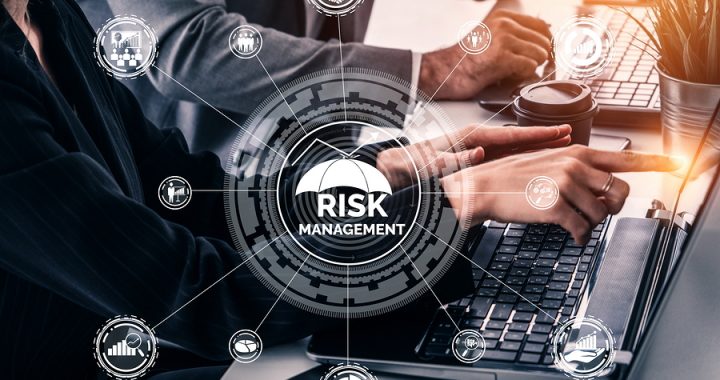The best way to find out how vulnerable to a cyber event your organisation is. Use the CareMIT Digital Diagnostic Tool or come to one of our regular quarterly “Security Board Meetings“
Tag Archives: risk management
Do a podcast they say, it’s easy they say. Sure it is!

Do a podcast they said, it’s easy they said!
Sure it is!
A touch of sarcasm there I am afraid.
My first idea for a podcast was to interview people who had been targeted, exploited and/or who had experienced a cyber event.
It would be full of information about, no wait…..
No one is going to talk about being breached!
That conversation, if they had lost thousands of dollars or worse closed their doors, would be way tooooo painful.
Although it would be of huge benefit to others and my target audience it would definitely be detrimental to the interviewee’s health
If they survived, talking about it would have a negative impact on their revenue, reputation and brand.
Not the best idea I have had.
Scratch that!
Second idea!
Let’s interview people in the industry.
A bit of research on the interwebs and it confirmed a long-standing realization that not-for-profit organisations, charities and small and medium businesses are treated shoddily by the cybersecurity industry.
After a couple of conversations, I soon realized that the best in cyber had very little understanding of the space that is occupied by organisations with less than 50 staff.
There are a number of people that are in the cyber industry who are wholly based in normal business and who understand cyber and smaller organisations.
I actually hope that I can interview them, but
Most do not understand the challenges and problems associated with a struggling small and medium business environment.
Where making a simple decision could mean that you have a cash flow issue, a marketing issue, a cyber problem or a going out of the business problem
So number 3 idea was born
There are two areas where everyone has problems in cyberspace.
The first are NFPs, Charities and SMEs.
Second, are the elderly and mature.
Coming soon as a podcast and video:
“Need help – ask Roger”
Cybersecurity for normal small businesses.
Some straight answers to cyber questions that the others are reluctant to answer.
A podcast about how to build resilience and security into your business from the basics up.
Get answers to the questions that you need to ask about business security
And to make myself even busier I thought,
“An old persons take on protecting their digital stuff”
The most under-protected user of the digital world are the elderly, retired and mature
This area of the population are uneducated and ill-informed but most important they are innocent to the true capability of the cyber-criminal.
This makes them the number one target for the cyber creep.
They are under constant attack through scams, extortion and fear-mongering.
Hopefully going to be launching them both this month, see lockdown has some advantages.
The first episodes of both of them went live this week all I have to do is find the URL for them
#nonprofits #smallbusiness #ExecutivesAndManagement #AccountingAndAccountants #ProfessionalWomen #ceo #CareMIT #cybersecurity #infosec
Why didn’t I insure my bike?

When I was in the Navy, I was based at Garden Island in Western Australia on and off for 5 years.
In that time I was relatively fit and I represented the Navy in a number of sports.
I would pedal to work (20Km each way) at least 4 days a week.
On a good day 40 minutes from the front door to the office.
90 minutes on the way home because you had to stop at the pub to get the goss
If you know the island you know that there is one problem.
No matter what direction you were going morning, afternoon or even if you had the luxury of knocking off early, you ran into the wind
On the causeway, the easterly and the sea breeze were always in your face.
Both of them could get up to 40Km per hour.
The only consolation was the flatness around the area.
One day my bike was stolen.
Taken out of the backyard.
It wasn’t until it was gone did I realize what it was doing in my life, apart from keeping me fit.
I didn’t have to drive so the wife could have the car to ferry the kids and do all of the other stuff she needed to do.
I didn’t have to drive so there was always extra money in the budget for everything we needed.
I could no longer come and go as I pleased, I now had to fit in with everyone else.
I could no longer go to the pub on the way home.
In fact, apart from the initial cost, the bike had cost me nothing.
This is what is happening in the digital world.
We do not know or understand the heavy lifting that our digital devices and services are doing for us.
That is until they are gone.
When they are gone, we realize that the business, organisation, association or ourselves have taken them for granted.
They were doing everything.
So an accidental loss, a cyber event or an insider will cause havoc unless you have stood back and thought:
What If?
What if we turn it all off?
Now what!
That “what if” makes you proactive.
It builds in resilience.
It is the first step to increased revenue, improved capability and scalability.
Have you looked at the business and thought WHAT IF????
Cybersecurity for the C suite executive (CEO, CFO,COO)
Cybersecurity for the C suite executive (CEO, CFO, COO).
Lets look at the facts!
No matter the size, shape or industry of an organisation.
No one is fully prepared for a full-on, bare knuckles, cyber ninja assault.
We are not talking about a random attack.
An attack that is being perpetrated against your organisation with Metasploit and a new copy of Kali.
This attack is from Mr. Creepy!
He knows what he is doing.
He knows what he is after.
But, more importantly, he also knows how to get it.
He has studied your organisation for months to find your weaknesses.
He has the skills and resources (very important) to break in and steal your crown jewels.
These are the people who give my industry grey hairs and stress lines.
Thinking that there is no way that you would be targeted by a professional is a grave mistake.
Because It no longer needs to be a professional!
They are quite happy to train others in the required skills.
They are quite happy to sell others their expertise.
They are quite happy to tell others where they are going wrong.
They have created capabilities and skills that they have incorporated into something to sell.
This increases the capability of the inexperienced cybercriminal immensely.
Want to avoid being on the radar as a prime target then YOU NEED TO DO SOMETHING.
Here is something to start with.
#nonprofits #ExecutivesAndManagement #AccountingAndAccountants #ProfessionalWomen #ceo #CareMIT #cybersecurity #infosec
Why 2022 could be a bad cybersecurity year for SME’s
SME’s are a prime target for cybercrime.
They have reduced expertise, minimal money, and an attitude, we are too small to be a target, that leaves them wide open to a cyber event.
Our industry, the people who know and think we understand the bad guys have been pushing for an attitude change for the last 10 years. In a large number of ways, we have failed, especially in the SME space.
In some, we have failed significantly.
By the time we get called in, after a cyber event, it is way too late.
To late to recover, too late to respond and definitely too late, in a number of organisations, to get back to business as normal.
Most SMEs, after a cyber event and especially after a ransomware attack, have but 3 choices,
- pay the ransom,
- recover from backup and hope you have a decent backup (a decent, tested backup is vital, no matter the situation)
- or go out of business.
Here are 3 cybersecurity strategies that every SME should implement to be more secure and avoid that devastating cyber event.
Training users
Increased awareness of business security in a workplace is vital in today’s business world.
Not many businesses know where to go to get that training.
Training needs to be done as an ongoing process.
Once or twice a year is inadequate. But training and education has to be easy, bite-size pieces, easily digested, easily implemented and easily followed.
In addition to ongoing training, you also need to incorporate business security into your onboarding process to instill the required cultural elements into new people on staff.
Want some free cybersecurity training, here is something that will definitely help
https://wizer-training.com/partner/caremit
Risk management and gap analysis
SME’s have a limited understanding of the new risks delivered to the business via our digital components.
The game has changed significantly in the last 10 years and we, as small and medium businesses, are constantly playing catch-up.
We are significantly hampered and handicapped by the impact and scale of our digital usage.
It is everywhere, used in every component and used all of the time.
To understand the risks without understanding the systems you need some help.
Here is some help for you.
Https://CareMIT.scoreapp.com
With the report, you can now implement a gap analysis and work out what you need to do to increase security around your organisation.
The report also ties in well with:
Implemented a framework
If you are looking for a better way to manage security within your Organisation, you need to look no further than a framework.
A framework is a documented system that allows an organisation to follow the bouncing ball and tighten up the security in a regimented way.
The more the components of the framework are implemented the more secure and mature the organisation.
Frameworks are easy to follow and implement and the one I recommend is the National Institute of Standards and Technology (NIST) cybersecurity framework.
https://www.nist.gov/cyberframework
Answer the 98 questions, honestly, and you now have a road map to implement cybersecurity in a significant way.
The NIST cybersecurity framework also gives you a number.
Between 0 – 4, it can be used as a comparison between businesses, supply chain components, and government departments so you can do business with like-minded organisations.
What can SME’s do?
It is not too late to implement any of these strategies. The bad guys are getting more and more clever, so time is running out.
They are targeting everyone who is connected to the digital world, the internet, with more sophisticated systems, a number of them are now fully automated.
Some of those automated systems have minimal human involvement after the initial set up.
From initial social engineering attack, all the way through to payment of ransom everything is automated and driven by machine learning.
Every SME should be implementing a training and education process, doing a risk and gap analysis and implementing a cybersecurity and business security framework.
With that everything else will follow.
The business will be more stable, the culture of the organisation will change and getting back to business as normal after an attack can be significantly easier.
The impact of a cyber event for an organisation implementing these 3 components or not is significant.
If you haven’t implemented these 3 strategies in the last 12 months, 2 years or 5 years then 2020 is going to be a bad year.
But it’s not too late.
How do we manage the risk of digital in todays business world?
10 years ago, cyber was not thought of as a risk to the business. It was just a way to do business that was faster and less expensive.
5 years ago we started to think, in very rudimentary terms, that cyber was a small risk but we knew nothing about it so we will pass it to the ICT department for them to manage.
We did this because the perception of digital risk was purely associated with the ICT of the organisation.
Since 2014 and the Target hack, C level execs, boardroom members, owners, and managers, realized that digital risk was bigger than they expected and the departments that they had relied on to secure their organisations were not, in fact, doing the job to the expected level.
Definitely not their fault, there were a couple of reasons for this, the first being that they relied on people who were more focused on keeping the lights on, making the technology work, than securing the environments.
The other was whenever they, the ICT department / managed service provider tried to secure the business environment, and they would have done regularly, they were fighting culture, fiscal and attitude issues that just made it too hard to make the business environment safe.
In this environment most ICT departments / managed service providers resorted to a number of basic strategies. Let’s get a decent firewall, let’s get a decent AV and let’s make sure that updates are applied. This is close to 10% of the requirements to secure an organisation.
Digital and cyber risks are now the number one or two risk factors on management minds in today’s business world.
They still do not know how to manage it.
The hardest part is visualization. How do those risks manifest themselves within the organisation?
No matter the size, the number of people you employ or the amount of money/revenue you make, digital risk can bring your organisation down in some cases literally overnight. In fact, at the speed of Cyber!
Business management still thinks that ICT departments and managed service companies are the answer.
They are not!
Business security is a whole of business issue with a mantra that cybersecurity is everyone’s problem. You need a team that crosses all of the lines of communication, from management to coal face.
You need people who understand the bad guys and can attack your system with the same capabilities and vigorous intention, but without the damage.
They need to approach the problem with the same intensity as the bad guys so that vulnerabilities can be exposed and removed, exploit can be counteracted and restricting a breach by monitoring the attack surface.
This will, in the end, make your environment more secure and stable.
You need someone with the right methodology, an understanding that technology is only part of the solution, and the ability to approach the huge problem in a manageable way.
It is only manageable when you address the areas apart from technology.
Why you need an off-site backup
Off-site, secure, out of band backups are your only hope for recovery in a cyber event
Ransomware, the scourge of today’s business, is literally a click away from crippling your business and organisation.
A determined crypto-virus attack on your organisation can reduce the organisations chance to make money, it can impact your reputation and can cause problems for months if not years.
Even an accidental infection, most result from an accident, can cause similar effects.
In the event of a crypto-virus attack, especially for small and medium enterprises, you have 2 options.
- You pay the ransom – you may get your data back, you may get some of it back or you may get none of it back, we are after all talking about a criminal organisation that is holding your data to ransom.
- You recover from your backup.
Paying the ransom is up to you, most security and ICT companies will say not to pay.
If you have a security or ICT company, or someone in your organisation that does the job they would have told you to do a backup.
Your back up has to cover the following:
- It should be regular – depending on your requirements for the data and access to the data a back up should be completed every 24 hours. A better solution is to have an incremental backup every 15 minutes.
- It should have no human intervention – the backup has to run no matter what. If you are backing up to a hard drive, connected to your device and you require someone to change drives then human error comes into it. The old adage that the backup will fail the same day you need it is true.
- It should be off-site – As in totally away from the business but also not connected to the business except when it is doing a backup.
- It should be secure – all the data, no matter where it is stored should have encryption wrapped around it. It should be encrypted at rest (stored on the location), it should be encrypted in transport (getting there and back) and it should be encrypted if you are going to use it. This stops the information being stolen but also being accidentally accessed by the provider.
- It should be tested regularly – you have done a backup and that’s all I have to do. No, you need to test it regularly. Do a regular restore to test that it works and also to ensure that you are backing up ALL of your essential data. You do not want to be in a situation where a failure is your first test.
Achieving all of these components is difficult. Try talking to us or a reputable ICT and security provider concerning your options!
Click here for your free trial of a secure, out of band off-site backup solution.
Cybersecurity, (Business Security) the art of dealing with risk
When it comes to cybersecurity or Business Security, the buzz words thrown around by salespeople are polluting the board room and confusing the owners, managers and C Level Execs of SME’s and charities.
They are making it harder for you to discover and understand why you need to define your risk prior to making any decisions about purchasing anything.
When it comes to protecting your organisation from a cyber attack it is all about risk.
The snake oil salesman, carpet baggers and sleaze balls are attracted to our industries in droves.
Why?
Just like in the past, it is easy to confuse someone with catch phrases, innuendo and just plain bull sh*t to purchase product that will not work or has been sold to an organisation as a panacea of all their ills when it comes to cybersecurity.
Big words and even bigger promises are the problem.
There is no “silver bullet” solution out there.
Business security is all about hard work.
It is an investment in time. It is an investment in understanding and most of all, it is an investment in protecting the many facets of your organisation.
A single solution will not do that. It cannot be done with the installation of a simple device.
When it comes to business security you have to analyze your risk.
The risk to business. The risk to the business. The risk to the people in the business and most of all, the risk to your clients. Not protecting their data will result in a lost of revenue, confidence and subsequently profit.
That is only the tip of the iceberg. After an breach it gets worse from there on.
The problem with risk is that risk is hard to visualize.
Most of us have problems with abstract ideas, risk management and risk assessment, if not done correctly are exactly that – abstract.
To move it from abstract to real we have to visualise the risks. Once we understand the risks we can mitigate them in a manageable way.
The mitigation of a known risk maybe the installation of an expensive piece of software/hardware.
You still have to understand the risk and mitigate it before you justify spending those thousands of dollars! That investment may only cover one risk, what about the other 49 you have discovered when you did the risk assessment?
We are in the process of putting together a special board room meeting, just for board members, owners, managers and C level execs. It is a hands on process, working on your environment, to understand the risks and the subsequent ways to protect your organisation in todays digital world.
There is no sales pitch, we are not selling anything but you will walk away from the boardroom with a better understanding of your risks, what they are, how to reduce them and what you need to do moving forward.








